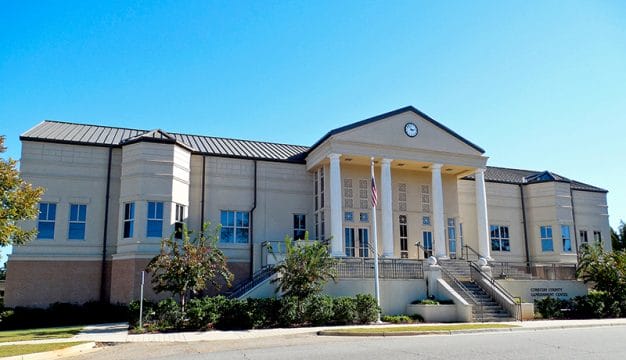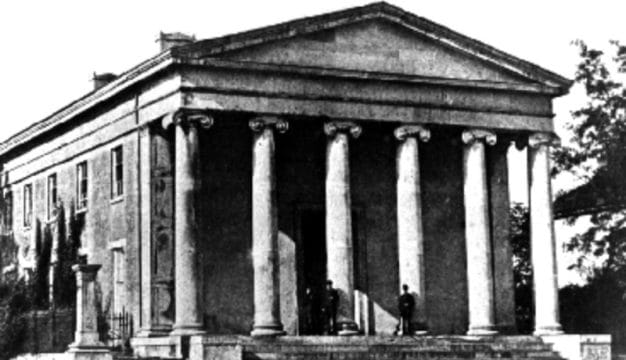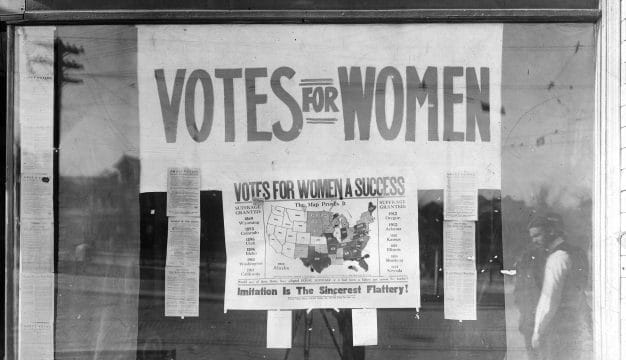Lurleen B. Wallace Community College
Lurleen B. Wallace Community College (LBWCC), named for the first woman governor of Alabama, provides postsecondary educational opportunities for several southeast Alabama and northwest Florida counties with facilities in Andalusia and Opp in Covington County; Greenville, Butler County; and Luverne, Crenshaw County. Its original campus was established in Andalusia in 1969, and in 2003 it merged with Douglas MacArthur State Technical College, which was established in 1965 in Opp, Covington County.
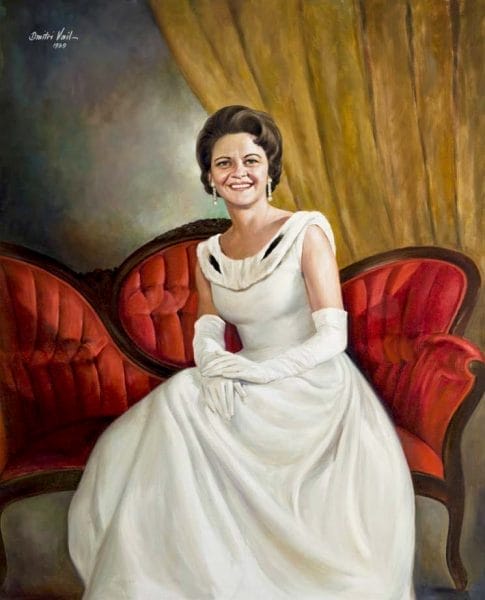 Lurleen Wallace Official Portrait
In 1967, the Alabama State Board of Education’s (BoE) authorized establishment of a junior college in Andalusia; more than $100,000 was raised locally to purchase land and provide initial capital for the institution. On August 15, 1968, the BoE selected Lurleen B. Wallace Junior College as the name in honor of the former govenor, who died on May 7 of that year, and appointed William H. McWhorter as its first president. In September 1969, the college opened in a temporary location leased from the Covington County Board of Education. In May 1970, it moved to its new campus on 112 acres, with an administration and classroom building and physical education dressing rooms.
Lurleen Wallace Official Portrait
In 1967, the Alabama State Board of Education’s (BoE) authorized establishment of a junior college in Andalusia; more than $100,000 was raised locally to purchase land and provide initial capital for the institution. On August 15, 1968, the BoE selected Lurleen B. Wallace Junior College as the name in honor of the former govenor, who died on May 7 of that year, and appointed William H. McWhorter as its first president. In September 1969, the college opened in a temporary location leased from the Covington County Board of Education. In May 1970, it moved to its new campus on 112 acres, with an administration and classroom building and physical education dressing rooms.
The Andalusia campus since has grown to 160 acres and includes nine buildings, six lighted tennis courts, a lighted baseball field, a lighted softball field, a two-mile scenic trail, a nine-hole golf course and driving range, and expansive parking. Andalusia residents physician Solon Dixon and his wife, Martha, established the Solon and Martha Dixon Foundation, which has provided more than $2 million for facility development, including the construction of the Solon and Martha Dixon Center for the Performing Arts and the Dixon Conference Center in 1982.
Upon McWhorter’s retirement in August 1990, James D. Krudop was named interim president until February 1, 1991, when Seth M. Hammett was selected as the new president. During Hammett’s administration, the college performed extensive renovation, remodeling, and refurbishing of the infrastructure; 26 major projects valued at approximately $1 million were completed, with a major portion of the funds again provided by the Solon and Martha Dixon Foundation. In 1992, the college expanded to Greenville, Butler County, beginning with the construction of a new 11,300-square-foot facility on 17 acres that opened for classes in fall 1993.
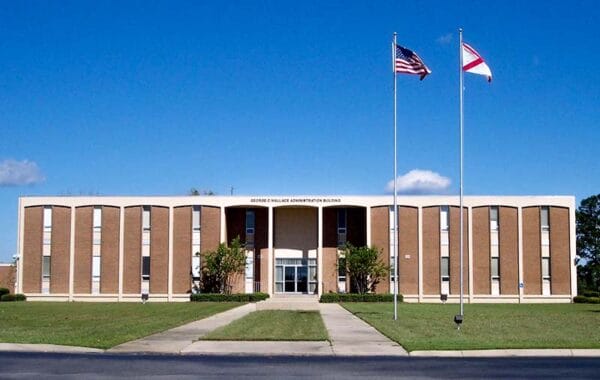 George C. Wallace Administration Building
President Hammett retired in June 2002, and James D. Krudop once again was named as interim president. On January 23, 2003, upon the recommendation of the Department of Postsecondary Education, the BoE merged Lurleen B. Wallace Junior College with Douglas MacArthur State Technical College in Opp to create Lurleen B. Wallace Community College. Edward Meadows was appointed as the president of the new institution. Douglas MacArthur State Technical College had opened in 1965 with a total of 116 students in 12 departments. At the time of the merger, the school consisted of 100 acres and 10 buildings and offered seven degree programs, eight diploma programs, and three certification programs. At the end of 2003, the Commission on Colleges of the Southern Association of Colleges and Schools recognized the two institutions as a single accredited community college, and the BoE took final action on the merger. The U.S. Department of Education recognized the two colleges as a single institution in January 2004.
George C. Wallace Administration Building
President Hammett retired in June 2002, and James D. Krudop once again was named as interim president. On January 23, 2003, upon the recommendation of the Department of Postsecondary Education, the BoE merged Lurleen B. Wallace Junior College with Douglas MacArthur State Technical College in Opp to create Lurleen B. Wallace Community College. Edward Meadows was appointed as the president of the new institution. Douglas MacArthur State Technical College had opened in 1965 with a total of 116 students in 12 departments. At the time of the merger, the school consisted of 100 acres and 10 buildings and offered seven degree programs, eight diploma programs, and three certification programs. At the end of 2003, the Commission on Colleges of the Southern Association of Colleges and Schools recognized the two institutions as a single accredited community college, and the BoE took final action on the merger. The U.S. Department of Education recognized the two colleges as a single institution in January 2004.
The successful merger resulted in a multi-campus comprehensive community college with facilities in Andalusia, Greenville, and Opp and serving the counties of Butler, Crenshaw, Coffee, Covington, and Geneva. In January 2006, LBWCC established a center in Luverne primarily to offer adult education and training for business and industry. The former National Guard Armory, initially leased from the Armory Commission, was purchased as the Luverne facility in July 2007. A new cosmetic arts center was dedicated on the Opp campus in 2006, followed the next year by the completion of the Child Development Center on the Andalusia campus and the Technology Building on the Greenville campus.
Meadows resigned to accept a position in Florida in 2008, and Herbert H. J. Riedel became the college’s new president on January 1, 2009. Also in 2009, the Wendell Mitchell Conference Center was completed on the Greenville campus, and major renovations began in the Luverne Center to provide classrooms and laboratories for workforce development training.
Today, LBWCC offers two-year associate degrees in several academic concentrations, including art, agriculture, music, business administration, education, biological and physical sciences, and pre-law. The college also offers certified occupational programs in areas such as nursing, automotive mechanics, emergency medical services, surgical technology, and welding. LBWCC provides adult education and workforce development programs, as well as dual enrollment opportunities to 16 area high schools. Distance educational opportunities are offered through four different formats: on-line, hybrid, telecourse, and CD/DVD, to best suit the needs of the students. LBWCC employs 117 full-time, 41 part-time, and 57 adjunct employees and operates within an annual budget of approximately $13 million.
LBWCC athletic programs include baseball, softball, and men’s and women’s basketball; the teams’ nickname is the Saints. In 2009, the Saints baseball team won the National Junior College Athletic Association Division II World Series. LBWCC offers students various academic and civic-oriented clubs and activities. The college has an active arts community through the visual arts department, drama club, and Ensemble, a show choir/band performance group consisting of 21 students who travel and entertain at area schools. The Student Government Association is an important link between the college administration and the student body.

